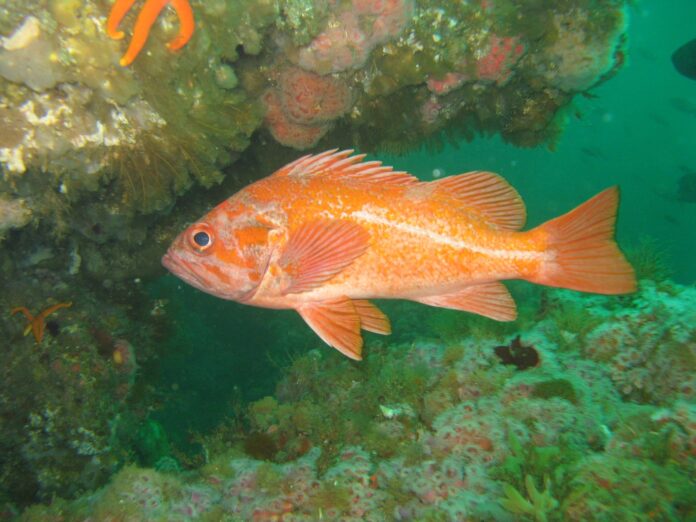
Why sending restricted rockfish down is important!
BY MERIT McCREA
SACRAMENTO – The CDFW has deployed a killer new web resource for descending device use, in honor of the current deep-only season and new descending device requirement. It’s filled with helpful links to the what, how and whys as well as how not and why not. The link is:
https://wildlife.ca.gov/Conservation/Marine/Groundfish/Rockfish-Barotrauma-and-Descending-Devices
There’s a variety of home-made and commercially produced devises shown. And best of all the links provided include some that tell you why it’s important. It also has some commentary on venting as to why it’s not the same and not advised and also won’t keep us on the water the descending devise use can.
In addition to being the right thing to do, releasing rockfish back to depth gets us credit for additional survivorship when managers estimate how many fish we’ve killed over the year.
The deal is there are some fish for which the mortality limit is quite restricted. Avoiding them and getting credit for released ones surviving results in more time on the water trying for all the other co-occurring rockfish species.
Here’s how they estimate the mortality for those severely restricted species, like copper and quillback, cowcod, bronze spotted and yelloweye. Each of these, even those we can’t keep has a total allowable catch.
First, for us recreational anglers the California Recreational Fisheries Survey observers record how many of each kind of fish are caught, whether any were released and if so, whether a descending devise was used.
Ever fish bagged counts as dead. For the fish released, there’s a table used of estimated depth-based mortality that provides a fractional credit for survivorship – some are expected to die anyway and some live. Now, thanks to the efforts of your representatives at the Pacific Fisheries Management Council, supported by CCA-Cal or the Sportifshing Association of California, and Groundfish Management Team staff which come from the Fish and Wildlife agencies from Washington, Oregon and California plus PFMC staff there’s a special table for the fish released using descending devises. It provides for much greater survivorship credit.
Not all fish survive the same, so each gets different credit depending on the depth it came from and species.
These numbers of observed fish are used to extrapolate the total mortality for the entire recreational sector, partyboats, private boaters and shore based.
By March or April of the following year managers have estimates for how many fish of each species were killed in the fishery. These are then used to estimate how long and were we can fish without going over the annual catch target in subsequent years. The lower the number of the “constraining species” the longer we can fish and the more water we can access.
Here’s an example, using reds, a fish we can actually keep, unlike cows and a few others. It was the most constraining rockfish for anglers south of Pt. Lopez, Big Sur and still a concern for the boats between there and Mendocino.
The harvest limit was 281.3 metric tons. That was the target we had to plan to. Of that about 70 tons was the expected commercial catch, with 210.7 tons left for recreational fishing. The commercial catch is much more well known, reported to the pound, every pound, within 3 business days of coming ashore, electronically.
We tried a bunch of different season set-ups as we tried to get a 9-month season, with as big a red bag limit as possible without estimating to go over 210.7 metric tons.
A 4-fish bag estimated to take 243.5 tons, 3 killed 238 – still to high. A 2-fish bag with April-June all-depth, July-September inside 50 fm, and October-December when fewer folks go, deeper than 50, resulted in 195.4 tons. That worked, with not too many tons left on the table. As of August we were tracking about 18% under the limit divided by months, but of course not all months are created equal.
By March we hope to have final numbers.
The harvest limit for yelloweye is just 9.3mt and the season structure this year, north and south projected 2.5mt
The harvest limit for quillback was 2mt. That was the most constraining species north of Pt. Lopez. The projection estimated 1.17 mt would be taken. We just barely avoided a closed season up there, and if the 2024 final mortality estimate exceeds 2 tons there will be big trouble so use those descending devises to get the maximum quillback survivorship credit. Copper rockfish mortality projected to be 48.03 metric tons with a harvest limit of 87.32 mt. That projection was based on 2023 numbers, but in previous years we’d blown by that limit by 2x. In ’23 a lot of boats were releasing almost every copper caught voluntarily

